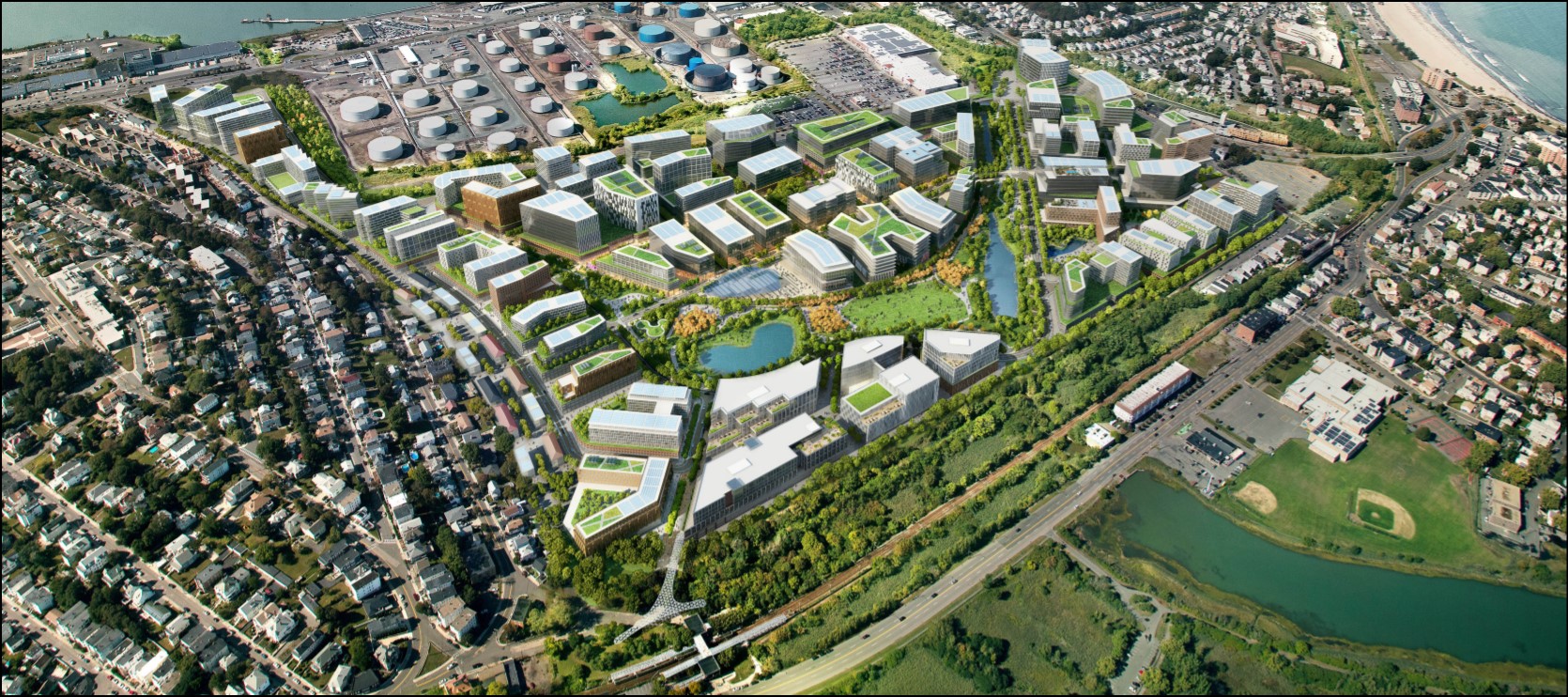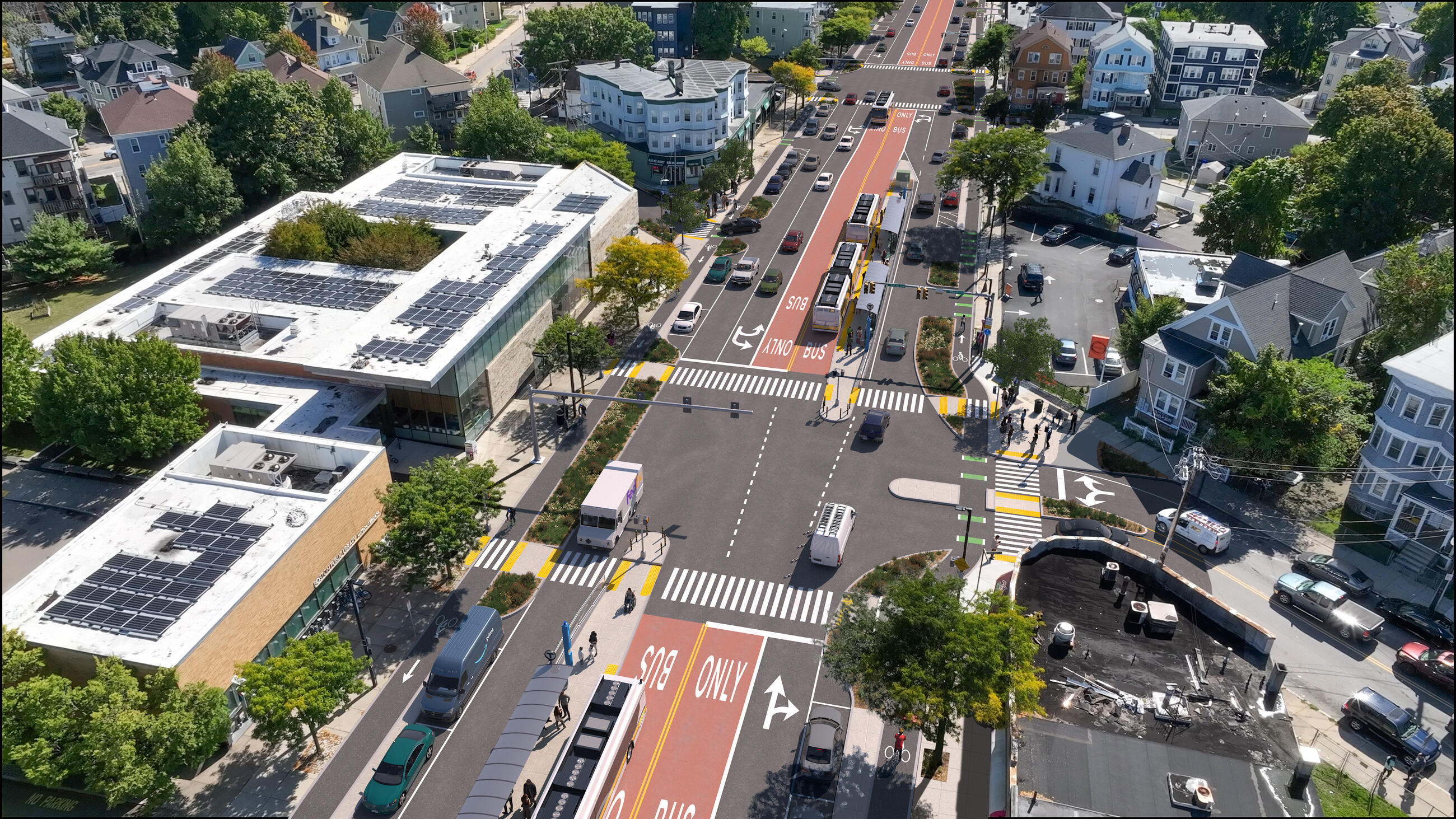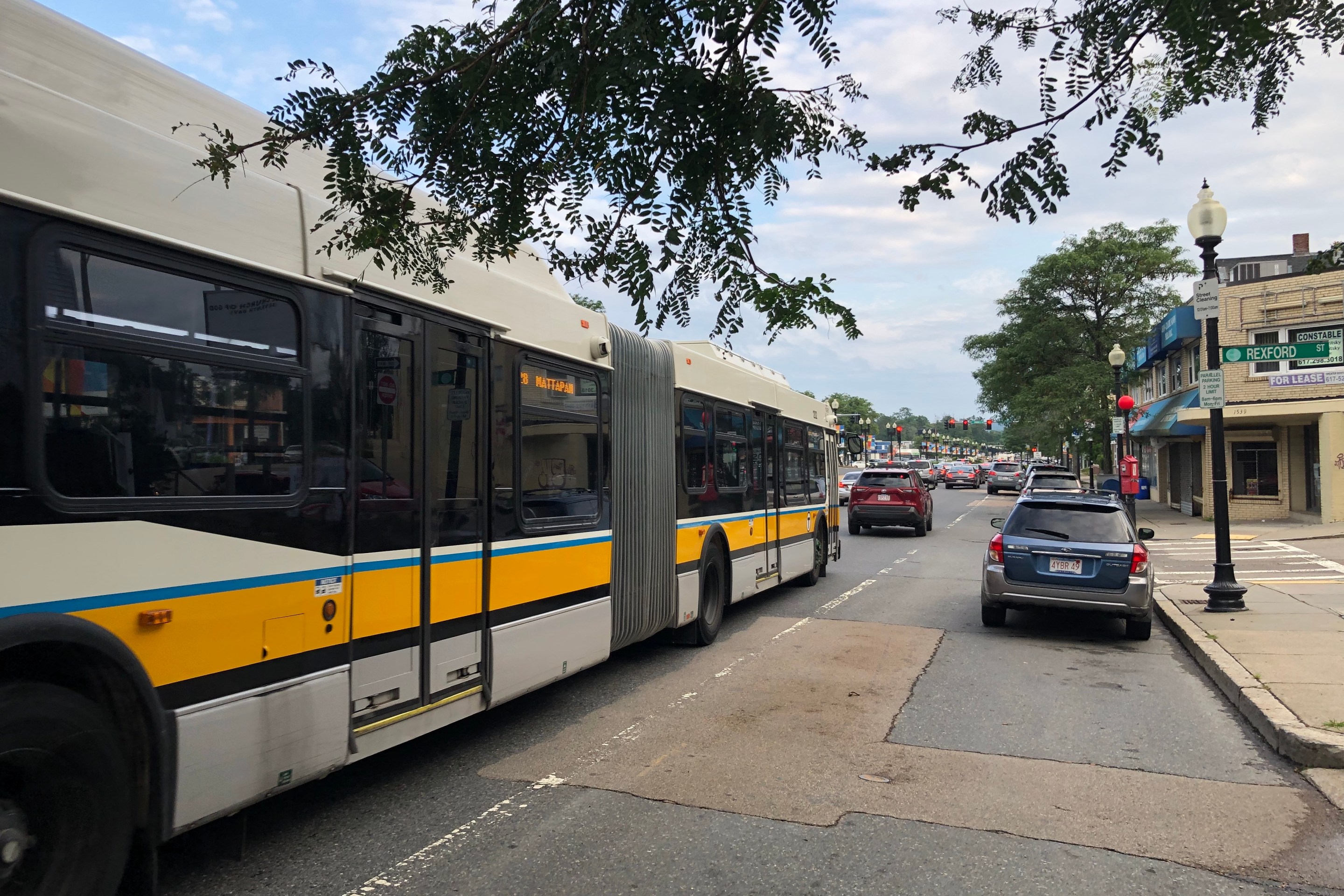At a public meeting Wednesday evening, developers from the HYM Investment Group announced that they hope to secure approvals next month for a massive development of Suffolk Downs, a former horse racetrack that straddles the Boston-Revere border adjacent to two Blue Line stations.
The developers are touting the proposal as a “transit-oriented” neighborhood that will bring thousands of new homes and jobs within walking distance of the Blue Line.
But even with promises of transit upgrades and new bike and pedestrian infrastructure, the project is also proposing to build thousands of parking spaces, and Boston planners are expressing wariness over forecasts that the development could generate over a hundred thousand new vehicle trips every day in East Boston.
The developers hope to build a new urban neighborhood from scratch, with dozens of new mid-rise buildings up to 200 feet tall. The master plan, which would be built in phases over the next two decades, calls for roughly 10,000 new apartments, 5.2 million square feet of new office space, new hotels, new retail and civic spaces, and 40 acres of new parkland.
In a presentation of the project Wednesday evening, Tom O’Brien of HYM Investment Group said that the Revere portion of the project, which covers roughly one-third of the project, has already been approved, and work could begin on the first phase of streets and buildings adjacent to the Beachmont T stop later this year.
But officials from the Boston Planning and Development Agency (BPDA) are still negotiating elements of the project, and a formal public hearing and vote on the project, formerly scheduled for January 16, has been postponed to February.
Sticking points include how much affordable housing will be built, and how the new development will mitigate traffic.
Developers had initially applied to widen Route 1A, which is anticipated to be the main route for motor vehicle traffic to the new development.
But in a planning memo, officials from MassDOT and the City of Boston pointed out that adding lanes would “release an excessive amount of traffic to the Ted Williams and Sumner Tunnels,” which are already at full capacity during morning rush hours.
Instead, an updated plan calls for the developers to pay for more modest adjustments to surrounding streets, and will redirect more mitigation funds to improve Blue Line service and upgrade the Beachmont and Suffolk Downs T stations instead.
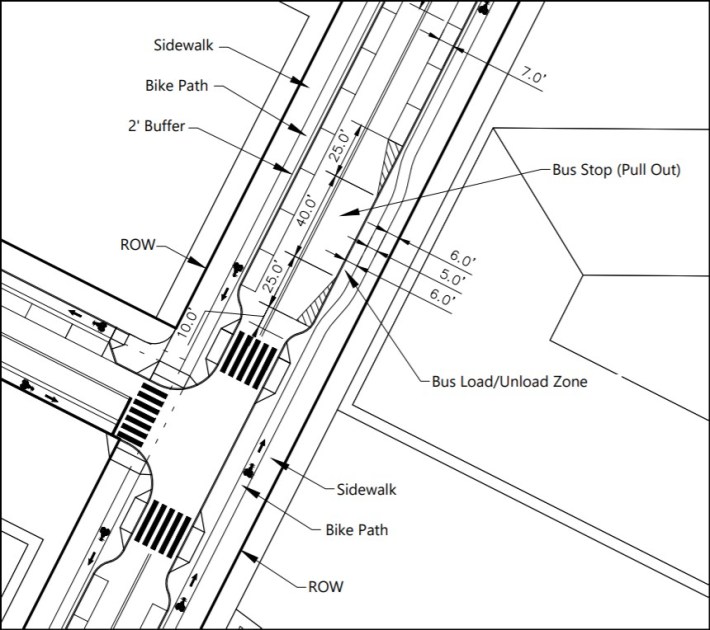
The master plan also lays out a new network of complete streets with high-quality bikeways, sidewalks, and stormwater treatment gardens. The development’s “Main Street,” which would run parallel to Bennington Street and Route 1A through a mixed-use district at the center of the site, would get physically separated bike lanes, as would Winthrop Avenue, one of Revere’s major east-west street connections. Several other streets inside the new development would also get separated two-way cycletracks.
That network of bike infrastructure would connect into a new mile-long section of the East Boston Greenway that the developers have promised to build into the site (illustrated as the thick blue line in the map below). That greenway could eventually connect to a proposed path along an abandoned MBTA rail corridor along Chelsea Creek.
HYM Investment Group has also pledged to design a future extension of the greenway along Belle Isle Marsh to Revere Beach (the red dashed line):
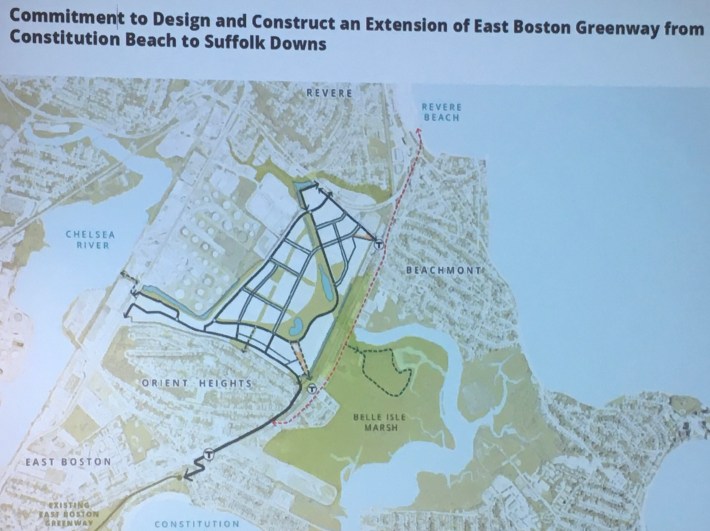
Still, for all of the project’s focus on transit and complete streets, the current design is expected to generate a tremendous amount of motor vehicle traffic.

Initially, HYM Investment Group had sought authorization to build for up to 7,216 parking stalls in the Boston portion of the project alone (and several thousand more in Revere).
After pushback from Boston officials, developers earlier this year reduced that figure to 6,760 parking spaces.
Those parking numbers reflect ratios of up to 0.75 spaces per planned housing unit, and 1 space per 1,000 square feet of office and lab space. Developers say that these calculations take into account the “transit-oriented” nature of the site, but these ratios still presume that most of the neighborhood’s households, and thousands of workers in the neighborhood’s offices, shops, and hotels, will bring motor vehicles with them.
In its recent “Perfect Fit” study of recent multifamily developments, researchers from MAPC surveyed dozens of recently-built housing developments where fewer than 50 percent of households were using on-site parking. That report noted that parking spaces are expensive to build (roughly $25,000 per space in a parking garage), and that their construction drives up the cost of housing.
In the case of Suffolk Downs, 6,760 new parking spaces, at an average cost of $25,000 per space, can be expected to cost roughly $170 million - over eight times more than the $20 million that HYM Investment Group has promised to set aside for transit upgrades.
To their credit, HYM's proposed parking ratios are lower than other large transit-adjacent projects that Boston planners have approved in recent years.
For instance, the BPDA’s 2017 master plan approval for “Seaport Square,” a 20-block development within walking distance of the Silver Line and South Station, authorizes a whopping 5,500 parking spaces for a project that’s expected to be less than half as big as the new Suffolk Downs neighborhood when both are fully built.
Since its 2017 approval, the Seaport district’s glut of subsidized parking garages has been roundly criticized as a major source of the neighborhood's punishing traffic problems, as highlighted in the Boston Globe’s recent “Seeing Red” series.
The BPDA does not need to make the same mistake at Suffolk Downs. In a project where traffic impacts and affordability are the primary concerns, reducing the project’s parking footprint could be an opportunity for the developers and the city to cut costs, improve affordability, and reduce the volume of traffic pollution within and surrounding the new neighborhood as it gets built.
City Councilor Lydia Edwards, the district councilor representing East Boston, has been demanding for over a year now that HYM Investment Group include more transit improvements and affordable housing in their plans.
At Wednesday’s meeting, she applauded the developers for their progress on those fronts, and for their recent commitment to use union labor during construction.
But she also made it clear that she expects to see more inclusive housing plans and a better transportation strategy before the project wins her full endorsement.
“I am excited for this project,” said Edwards at Wednesday’s public meeting. “But I’m not excited for any old project. I know that I will be held accountable by my constituents, and I think about them all the time, and whether they’ll be able to see themselves in this new neighborhood… I see this (project) as a partnership and a relationship, but I know who I work for.”
